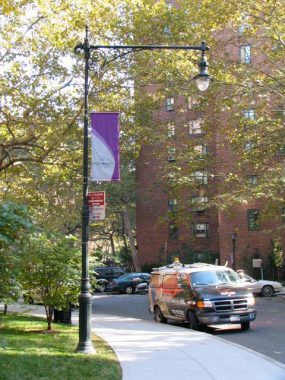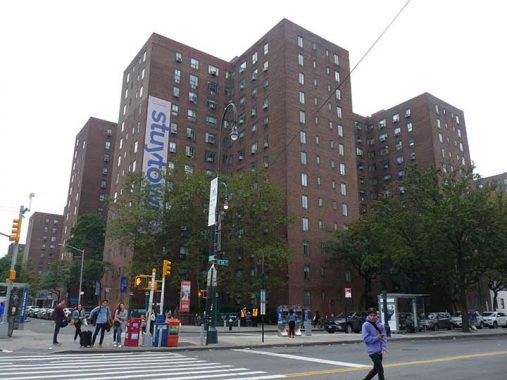
STUYVESANT Town sits on an almost-square defined by East 14th and East 20th Street, 1st Avenue and Avenue C, with 89 buildings containing 8,757 apartments. By auto it’s accessed by a series of ovals located on its four border streets, and pedestrians can easily access its four “quadrants” via the center oval. A second residential complex, Peter Cooper Village, sits north of East 20th Street.
I have a personal connection to Stuyvesant Town — my father worked here as a custodian for 30 years, between 1958 and 1988; he only retired when he turned 70. This was an era in which unionized jobs with ample benefits were … somewhat more attainable than now. He would work the usual Monday through Friday, but occasionally he would work the weekend and take Wednesday and Thursday off, on which days he would see me off to school. It was a long way with two trains from Bay Ridge to Stuyvesant Town, so he would leave the house at around 7 AM or even before that, before I got up, usually arriving home around 7 PM. During snowstorms he would need to go in at off hours to shovel snow.
What’s surprising is that I never visited Stuy-Town when he was working there (I do recall heading over there an evening or two by car when one of my father’s friends drove us there). The old man never helped put me on the famed list of people waiting for apartments to open up, but as he’d probably say now if he was still around, “You didn’t ask me!”
On this page you also see an example of 14th Street “bigloop” lamps, which are found only on 14th Street and the Williamsburg Bridge.
More from 14th Street on this FNY page.

Stuyvesant Town is also known (well, to me) for the last surviving stronghold of Type G poles, which closely resemble Type 24M Corvingtons but have bases resembling Type Fs or Type A, B and E park poles. They have sported a number of different lamp fixtures over the years.
As always, “comment…as you see fit.” I earn a small payment when you click on any ad on the site.
1/31/23
